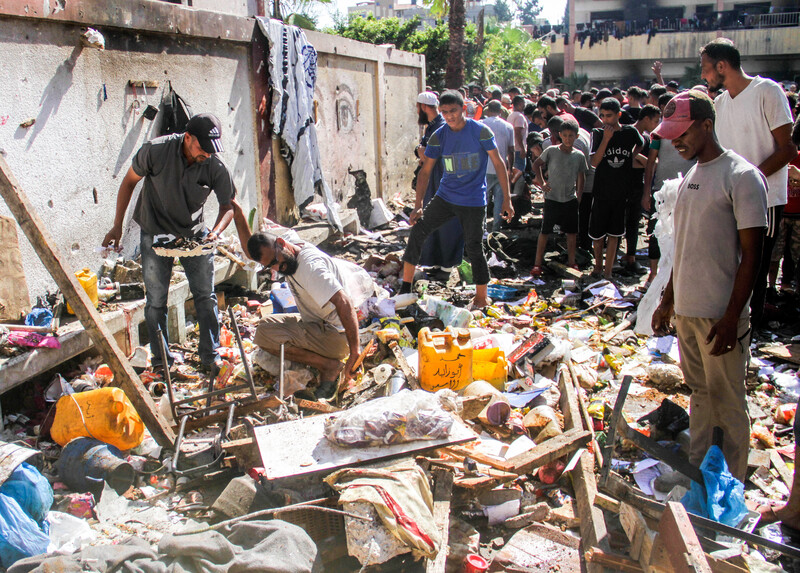The Electronic Intifada 1 October 2024

Palestinians gather at the site of an Israeli strike on the Hafsa al-Faluja School, which had been transformed into a shelter for displaced people. Israel killed 15 people in its attack on the school on 26 September 2024.
SOPA ImagesOn 26 September, around 2:30 in the afternoon, I was on the roof of my family’s home in Jabaliya, in northern Gaza. I was studying online, and the roof is one of the few places where I can catch an internet signal.
I was in a Zoom meeting when I felt our house shake. I heard a loud noise and I saw dense smoke nearby and shrapnel flying at our roof. At first I was paralyzed with fear, then I ran inside.
I thought our house had been targeted, but it was not. Israel had instead launched missiles, with no warning, at the Hafsa al-Faluja School, where I had once been a student and where displaced people now sought shelter.
I rushed to the school, located just 30 meters from our home, to see what had happened and to see if I could help. The air was filled with screams and people crying out for their loved ones.
Blood was everywhere. Rescuers shouted over and over again, “The injured first, then the martyrs.” There was nothing more they could do for the dead, though there was still a slim chance for the wounded.
Ambulances arrived and took most of the injured away, and then it was time to count and recover the martyrs.
Young men gathered body parts, wrapping them in blankets. The remains of children were placed in a small cooler that had been used to store water. I saw severed heads, limbs and burned bodies that were beyond recognition.
Grieving women were screaming, desperate to identify their children and husbands. Men, too, searched for their wives, who had been baking bread in the courtyard, only to find them soaked in blood, with the bread tainted as well.
The total number of martyrs was 15, with dozens more injured.
I personally knew more than seven of the martyrs: two were friends, one was my teacher and three were my neighbors. Their names: Souad Abu Tabaq, Muhammad Ghraib, Ahmed Kutkut, Jehad Humaid, Sahar Abu Traish, Ismail Abed al-Rahman and Reham al-Saqa.
Happiest years of my life
From ages 16 to 18, I was a student at Hafsa al-Faluja School. The three years I spent there are among the happiest of my life.
But when Israel launched its genocidal war on Gaza, the school was converted into a shelter for displaced people. Many of these displaced people are my friends, and they were forced to take shelter there when Israel bombed their homes.
They live in the school’s small rooms, with sheets hanging as curtains between each family’s space for privacy, or a semblance of privacy. Most of the children spend their days outside in the schoolyard, not only because of lack of space but also because they must wait in long lines for water.
When Israel attacked the school, most people were outside their rooms, in the schoolyard. Some baked bread over fires, and children were either selling water or waiting in line to collect it, and men were also in the yard.
Fortunately, over the past year, my family’s home in Jabaliya has only suffered partial damage, allowing us to stay there.
But this massacre, so close to home, is a grim reminder of the violence that Israel inflicts upon us daily, the inhumanity of the oppressive occupation.
Asil Almanssi is a writer based in Gaza.





